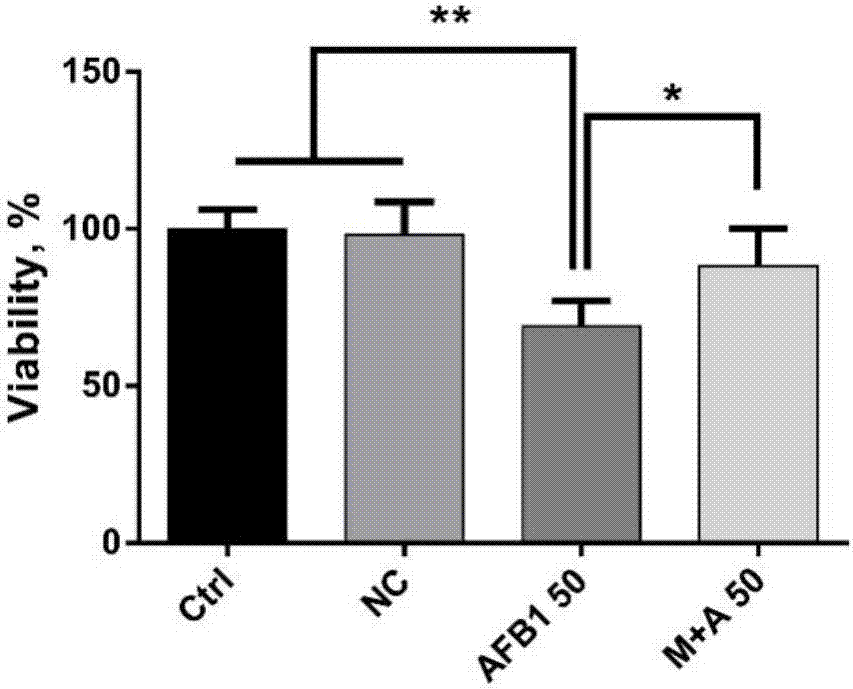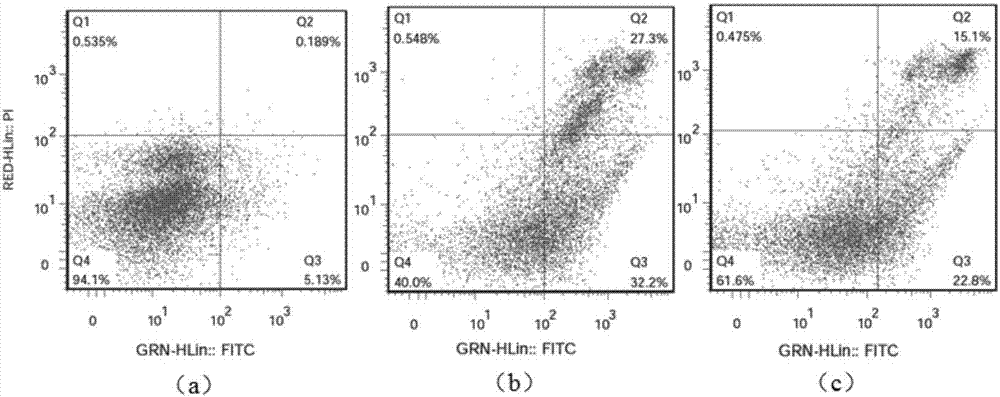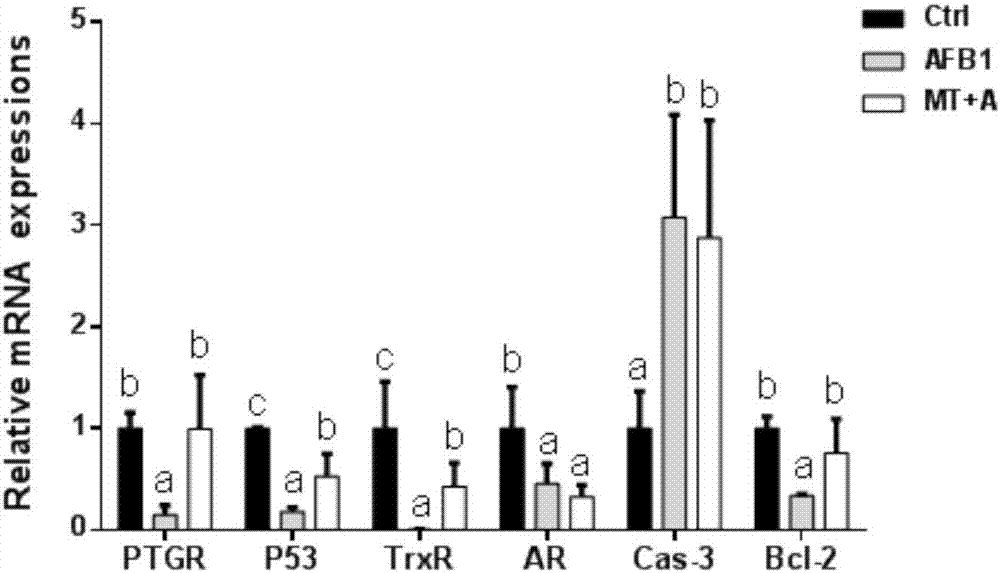Application of MT (Metallothionein) gene serving as target gene for preventing and treating AFB1 (Aflatoxin B1) caused hepatic injury of duck
A liver injury and genetic technology, applied in the field of prevention and treatment of duck liver injury target genes caused by AFB1, can solve the problems of unclear liver toxicity and other issues
- Summary
- Abstract
- Description
- Claims
- Application Information
AI Technical Summary
Problems solved by technology
Method used
Image
Examples
Embodiment 1
[0017] Example 1: AFB 1 Changes of cellular antioxidant enzyme activity after treatment of normal duck primary hepatocytes and MT overexpression duck primary hepatocytes
[0018] The six-well plate was rinsed twice with cold PBS solution, and the hepatocytes of each treatment group were collected in 1.5mL EP tubes and frozen at -80°C. For experiments, the cells were triturated with liquid nitrogen and lysed with saline at 4°C. The activities of SOD, GST, GPX and other enzymes and the content of MDA were all operated according to the relevant instructions of Nanjing Jiancheng, and measured with an ultraviolet spectrophotometer.
[0019] It can be seen from the results that 50ng / mL AFB 1 After treatment of hepatocytes (AFB 1 group), the activities of GPX and SOD in cells were significantly lower than those without AFB 1 The treatment group (control group) (P1 The activities of GPX and SOD in the cells treated with MT overexpression hepatocytes group (MT+A group) were signifi...
Embodiment 2
[0020] Example 2: AFB 1 Changes of intracellular AFBO-DNA content in normal duck primary hepatocytes and MT overexpressed duck primary hepatocytes
[0021] The determination of AFBO-DNA adduct was performed according to the instructions of Aflatoxin DNA Adduct Competitive ELISA Kit (Cell Biolabs, Inc.) (AKR-351). (1) Standard curve preparation: The AFBO-DNA standard was serially diluted to prepare solutions with concentrations of 0, 0.0625, 0.125, 0.25, 0.5, 1, 2, and 4 μg / mL. (2) Add 50 μL of sample and AFBO-DNA standard to each well of the coated plate, and shake on a shaker at room temperature for 10 minutes. (3) Antibody dilution: Dilute AFBO-DNA primary antibody with Assay Diluent 1:500, immediately add 50 μL of the diluted solution to each well of the coated plate, and shake at room temperature for 1 hour. (4) Wash 3 times with washing solution, and absorb the residual liquid with filter paper. (5) After diluting the AFBO-DNA secondary antibody at a ratio of 1:1000, i...
Embodiment 3
[0023] Embodiment 3: MTT test measures AFB 1 Changes of cell viability after treatment of normal duck primary hepatocytes and MT overexpression duck primary hepatocytes
[0024] The duck primary hepatocytes in the logarithmic growth phase were digested with trypsin, and the primary hepatocyte suspension was made with WME medium. After adjusting the cell concentration, they were inserted into a 96-well plate to ensure that the number of cells per well was 2000~ 4000, placed in CO2 After the cells adhered to the wall in the incubator, the medium was discarded, and the medium containing AFB was added 1 100 μL of medium, AFB in each medium 1 Concentrations were 25, 50, 75, 100, 125ng / mL, placed in CO 2 Cultivate in the incubator for 24h. After the culture is over, add 10 μL of 0.5% MTT solution to each well of the culture plate, place it in the incubator for 4 hours, discard the medium carefully, add 150 μL of DMSO, shake on the shaker for 10 minutes, and use a microplate reade...
PUM
 Login to View More
Login to View More Abstract
Description
Claims
Application Information
 Login to View More
Login to View More - R&D
- Intellectual Property
- Life Sciences
- Materials
- Tech Scout
- Unparalleled Data Quality
- Higher Quality Content
- 60% Fewer Hallucinations
Browse by: Latest US Patents, China's latest patents, Technical Efficacy Thesaurus, Application Domain, Technology Topic, Popular Technical Reports.
© 2025 PatSnap. All rights reserved.Legal|Privacy policy|Modern Slavery Act Transparency Statement|Sitemap|About US| Contact US: help@patsnap.com



